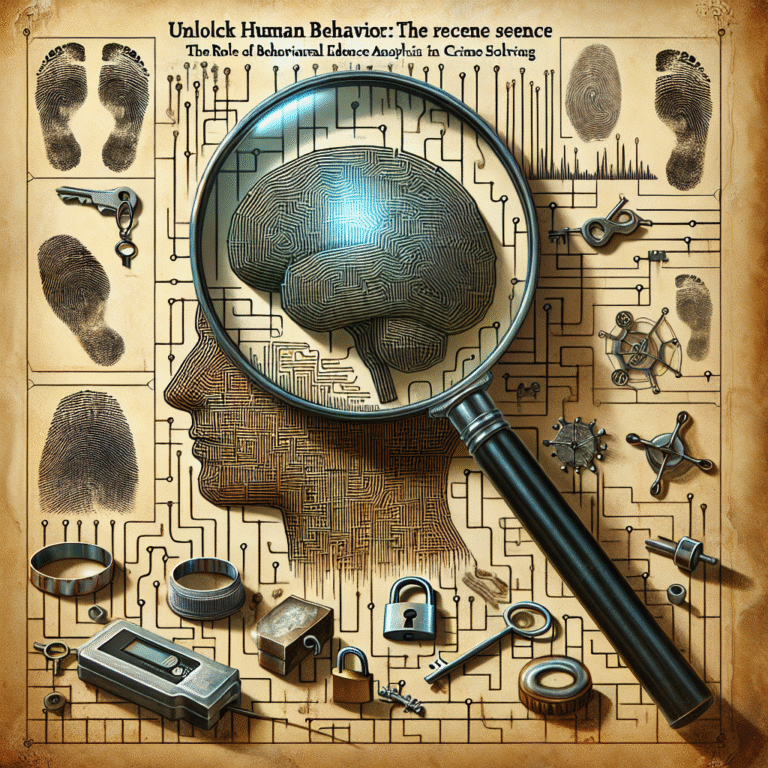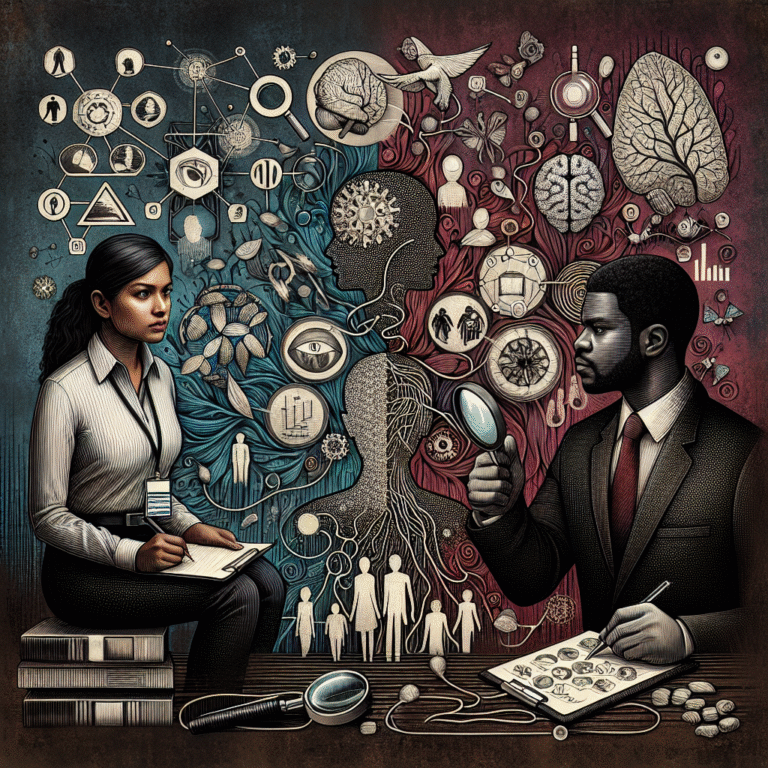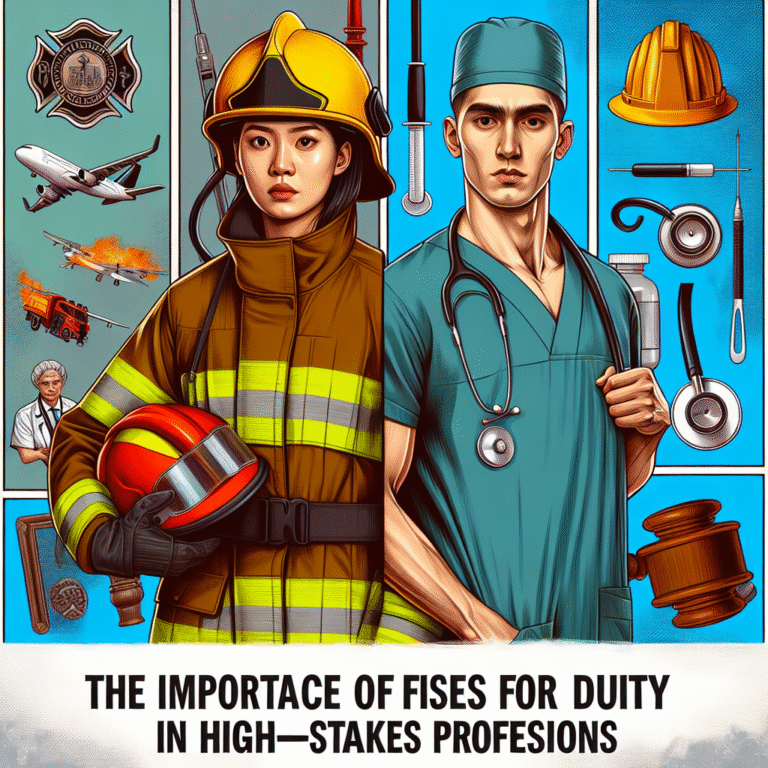
Introduction
In the curious world of law enforcement and interrogation, the phrase "good cop, bad cop" has become a cultural touchstone that transcends its origins. It captures the complex dance between empathy and pressure—two approaches that often coexist in the high-stakes atmosphere of an interrogation room. But why does this classic strategy resonate so well? As we unpack the layers of From Good Cop to Bad Cop: Exploring Classic Interrogation Strategies, we’ll delve into not just the methodology itself but also its psychological underpinnings, effectiveness, and real-world applications. This exploration offers an ultimate guide for those intrigued by the interplay of human psychology, law enforcement tactics, and the pursuit of truth.
The Psychology Behind Interrogation
Understanding Human Behavior
At the core of any interrogation strategy, including the good cop-bad cop approach, is a fundamental understanding of human behavior. Interrogators must understand stress responses, emotional triggers, and cognitive biases to achieve their goals effectively.
Case Study 1: The Perception of Authority
In a notable case from the 1990s, police used the good cop-bad cop strategy to extract a confession from a suspect involved in organized crime. The good cop built rapport and understood the suspect’s background, while the bad cop applied emotional pressure by presenting an aggressive front. The balance between these opposing roles created an environment where the suspect felt understood yet cornered, leading to a confession.
Building Rapport: The Good Cop’s Role
The good cop’s primary role is to establish trust and rapport with the suspect. Utilizing techniques such as active listening, empathy, and non-verbal cues can significantly enhance the suspect’s willingness to cooperate.
Table 1: Good Cop Techniques
| Technique | Description | Outcome |
|---|---|---|
| Active Listening | Nodding, summarizing, and reflecting feelings | Builds trust |
| Empathy | Acknowledging suspect’s fears and concerns | Lowers defenses |
| Non-verbal Cues | Open body language and eye contact | Creates a connection |
The Bad Cop Approach
Pressure and Tactics
Conversely, the bad cop creates an atmosphere of intimidation and urgency. This can take the form of raised voices, aggressive questioning, or even threats. The goal here isn’t just to frighten the suspect but to bring them to a breaking point.
Case Study 2: High-Pressure Tactics
One high-profile case saw a suspect involved in a violent crime responding to aggressive interrogation tactics rapidly. Under pressure from a bad cop figure, the suspect began to make inconsistencies in their alibi, ultimately leading to a confession. This case underscored the power dynamics at play and how pressure can compel a suspect to speak.
The Dance of Opposites: Effective Application
Now that we’ve explored the roles of good cop and bad cop individually, the magic happens in how they work together. The good cop’s kindness creates a safe space where the suspect feels they can confide in someone, while the bad cop’s aggressive behavior heightens the urgency of the situation, pushing the suspect to talk.
Chart 1: Interrogation Strategy Dynamics
| Interrogation Phase | Good Cop Actions | Bad Cop Actions | Combined Outcome |
|---|---|---|---|
| Opening | Establish rapport | Intimidate with presence | Create a contrast |
| Tension Building | Offer understanding | Increase pressure | Push suspect towards revealing information |
| Resolution | Offer leniency | Implied consequences | Encourage confession |
Ethical Considerations
The Fine Line Between Pressure and Coercion
While the good cop-bad cop method can be effective, it raises significant ethical questions. How much pressure is too much? At what point does a strategy become coercive? Ethical interrogators must recognize the line between effective questioning and unethical manipulation.
Case Study 3: The Consequences of Overreach
In the case of a wrongful conviction based on a coerced confession, the lack of ethical responsibility in the interrogation led to public outcry and reviews of police practices. This incident highlighted the importance of transparency and ethical considerations in interrogation methodologies.
Legal Ramifications
The legal landscape surrounding interrogations is continually evolving. Interrogators must navigate laws that protect against coercive tactics and ensure that all confessions are admissible in court. Strategies employed must maintain the suspect’s rights while striving for truth.
Training and Skill Development
Preparing the Interrogator
Law enforcement agencies are increasingly recognizing the necessity of training in both the psychological aspects and the practical execution of interrogation techniques. This training focuses on ethical practices while enhancing skills like empathy and emotional intelligence.
Table 2: Essential Skills for Interrogators
| Skill | Description | Importance |
|---|---|---|
| Emotional Intelligence | Understanding and managing emotions | Enhances rapport |
| Active Listening | Focusing fully on the speaker | Builds trust |
| Persuasion Techniques | Convincing the suspect to cooperate | Successful outcomes |
Technology and Interrogation
Modern Tools Enhancing Classic Strategies
The era of technology has introduced new tools that complement traditional methods. Body language analysis software, voice stress analyzers, and even AI-driven analysis can provide valuable insights into a suspect’s truthfulness.
Case Study 4: Tech Meets Tradition
In a recent case, police utilized facial recognition software alongside good cop-bad cop tactics to analyze a suspect’s responses during questioning. The blend of human intuition and technological data yielded insightful observations, leading to the suspect’s ultimate confession.
Ethical Use of Technology
However, the incorporation of technology in interrogations also underlines the need for ethical safeguards. For instance, the use of data gathered without consent or through manipulation can raise significant legal concerns.
Real-World Challenges
Misapplication of the Strategy
One of the greatest challenges with the good cop-bad cop strategy is its misapplication. A poorly executed interrogation can lead to false confessions or missed opportunities to gather accurate information.
Case Study 5: The Fallout of Misuse
In a controversial case study, detectives trying to use a good cop-bad cop tactic ended up confusing a suspect who ultimately became combative, refusing to answer any questions. This misstep serves as a cautionary tale about the necessity of experience and understanding before employing such strategies.
Conclusion
As we’ve explored From Good Cop to Bad Cop: Exploring Classic Interrogation Strategies, it’s clear that effective interrogation is a multifaceted skill that requires a depth of understanding, patience, and ethical considerations. While the duality of the good cop-bad cop strategy may strike a balance between empathy and pressure, its successful application ultimately depends on the skill of the interrogator.
Inspire Action
As readers, whether you’re in law enforcement or simply curious about human behavior, remember: it’s not just about extracting information; it’s about building connections, understanding psychology, and ensuring that truth prevails within ethical boundaries. The next time you think of an interrogation, consider the intricate dance of good and bad—the balance that can lead to astonishing revelations.
FAQs
1. What is the underlying principle of the good cop-bad cop strategy?
The principle is to create a psychological dynamic where one officer fosters trust while the other applies pressure, encouraging the suspect to reveal information.
2. How effective is the good cop-bad cop technique?
Its effectiveness varies by case and individual; however, many officers report higher success rates when employing this strategy properly.
3. Are there ethical concerns with this interrogation method?
Yes, coercive tactics can lead to false confessions and a breach of suspect rights, raising ethical questions about its use.
4. How can technology aid the interrogation process?
Modern tools, including body language analysis and voice stress analyzers, enhance traditional methods by providing deeper insights into a suspect’s truthfulness.
5. What skills should an interrogator develop?
Essential skills include emotional intelligence, active listening, and persuasion techniques to effectively navigate the complexities of human behavior during interrogations.
This comprehensive exploration of From Good Cop to Bad Cop: Exploring Classic Interrogation Strategies aims to furnish readers with insights to appreciate and critically analyze methods used in high-stakes interrogations, blending psychology, ethics, and practical application.















